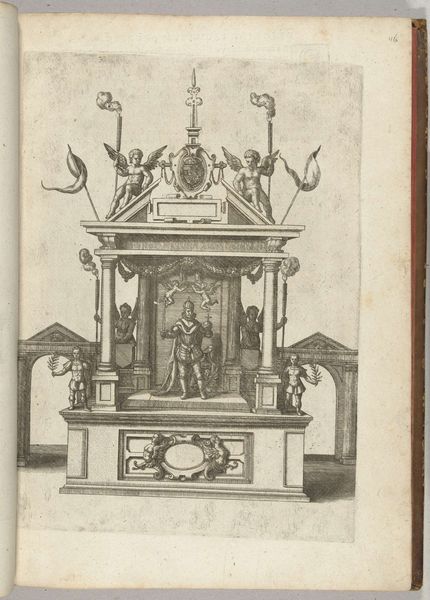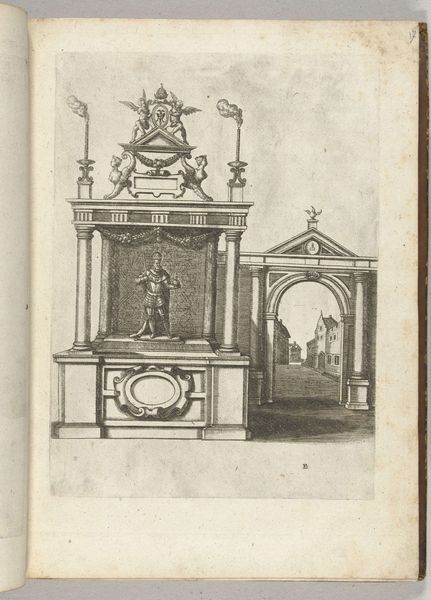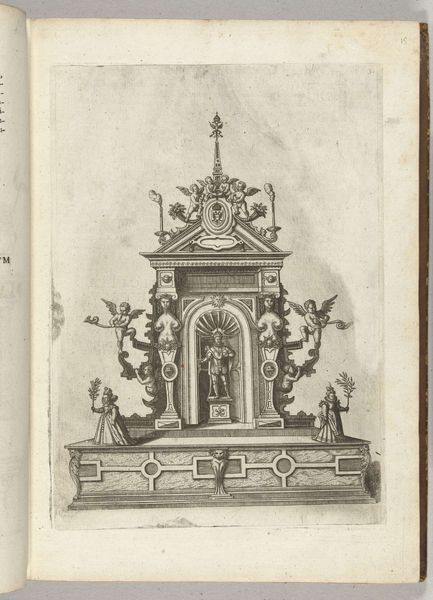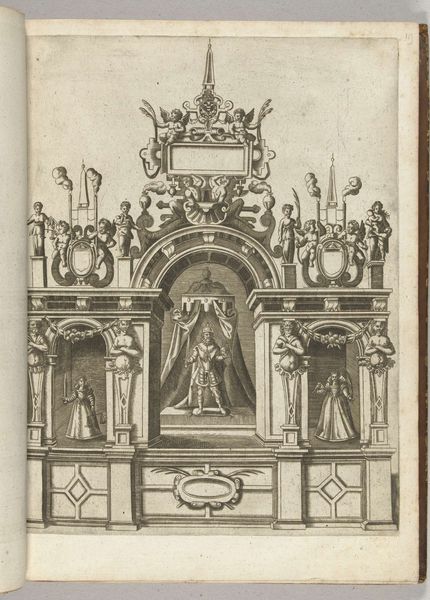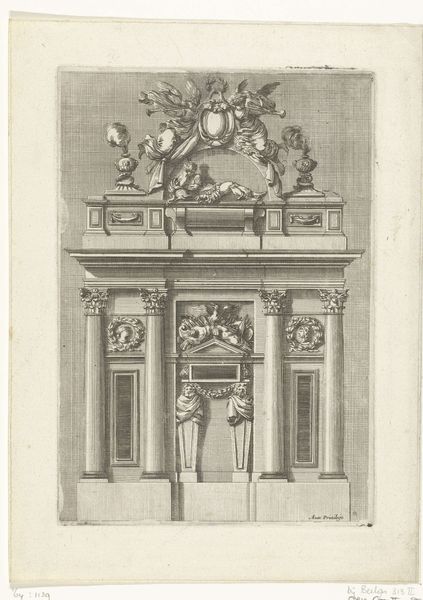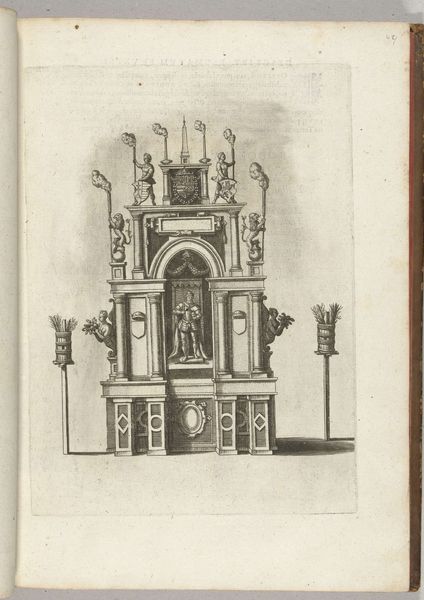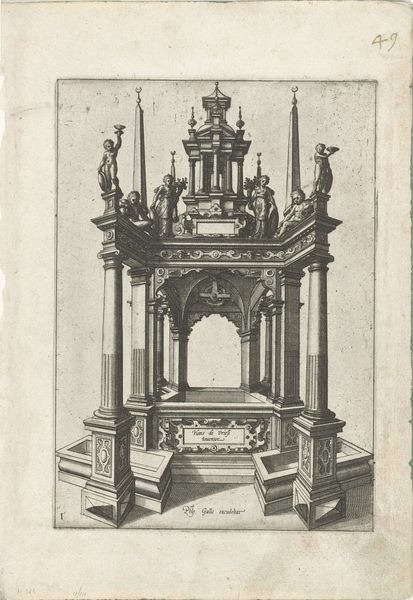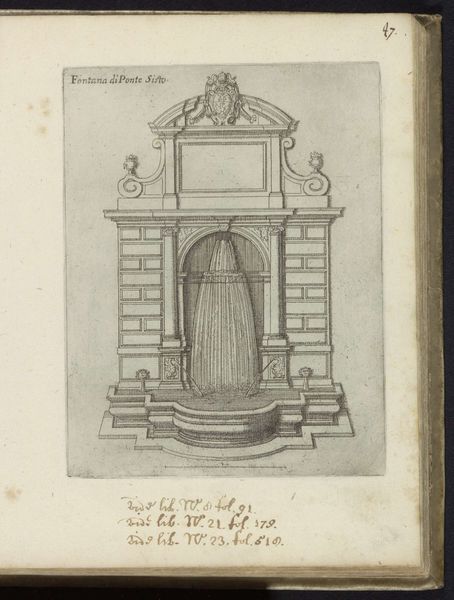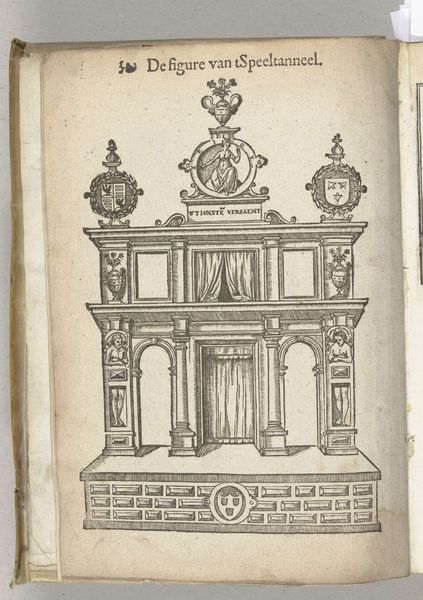
drawing, print, engraving
#
portrait
#
drawing
#
medieval
# print
#
11_renaissance
#
history-painting
#
engraving
Dimensions: height 315 mm, width 225 mm
Copyright: Rijks Museum: Open Domain
Curator: Before us is an engraving from 1594, "Toneel met keizer Ferdinand I," currently residing at the Rijksmuseum and created by an anonymous artist. Editor: My initial impression is one of austere power; it’s all strong verticals and rigidly symmetrical forms. It feels very architectural, almost like a stage set itself, quite static, in monochrome—demanding respect. Curator: Indeed. Consider the historical implications. Ferdinand I was Holy Roman Emperor during a time of immense religious and political turmoil. The setting depicted is staged; consider the performativity of power, the symbolic architecture designed to communicate his authority amidst the fractures of the Reformation. Editor: The engraving highlights a tension. Note the confined space where the Emperor stands, almost imprisoned within the architecture; there are symbolic elements decorating this structure, flags, shields, and the figure himself almost functions as an emblem in this highly structured composition. Curator: And that positioning reflects his complicated reign. Ferdinand was attempting to consolidate power and navigate religious conflict between Protestants and Catholics. So this "stage" becomes a visual representation of that tension. Editor: Focusing purely on its structural organization, the symmetry draws our eye to the center— to Ferdinand—but the almost exaggerated framework distracts. Is the subject being emphasized or being swallowed by the composition itself? Curator: That tension might speak to Ferdinand's legacy. He centralized Habsburg rule but faced challenges. I interpret it through the lens of early modern identity. Gender performance here is paramount, a conscious staging of masculinity in a turbulent context. Editor: It's interesting how a close analysis of composition and the historical analysis interlock. Curator: I’m left contemplating the construction of power and identity within a framework of immense social change. Editor: It makes me consider the power of lines, the balance between void and the subject that commands the space so decisively in art.
Comments
No comments
Be the first to comment and join the conversation on the ultimate creative platform.
